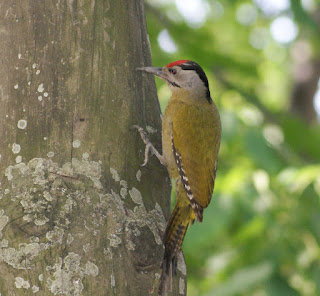The Male common stonechat(about 15 cm) is a black headed bird with white rump, orange-brown breast and black neck. There are conspicuous white patches on sides of the neck and on the wings.
Female has dark streaks on the upperparts which are rufous brown in colour. It has also got a white wing patch and the throat is whitish in colour.
Common stonechat can be seen in dry fields with bushes, in scrub areas, grasslands and cultivations between altitudes of about 700m-3000m.


.jpg)
.jpg)





.jpg)
.jpg)








 Drongo is very aggressive towards many birds which are much larger in size. It is known for chasing away birds of prey who try to invade its territory. This is the reason that many smaller birds nest in the well protected neighbourhood of the Black Drongo.
Drongo is very aggressive towards many birds which are much larger in size. It is known for chasing away birds of prey who try to invade its territory. This is the reason that many smaller birds nest in the well protected neighbourhood of the Black Drongo.

























